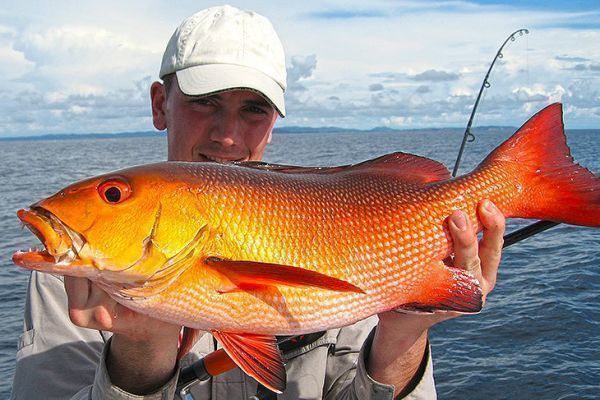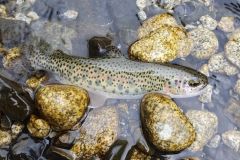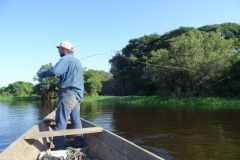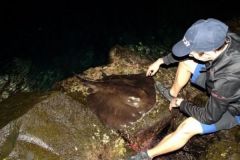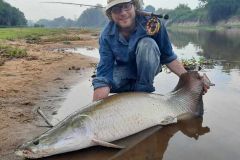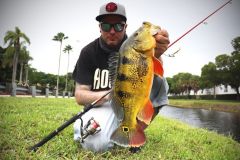Scientific name
Lutjanus bohar (Forsskňl, 1775)
Morphology
This red carp snapper is distinguished by its stocky body with a more or less pronounced reddish hue. Its massive head has a pointed snout, and its mouth has large lips and powerful canine teeth. The fins, generally dark, can sometimes have a fine white border on their outer edge.
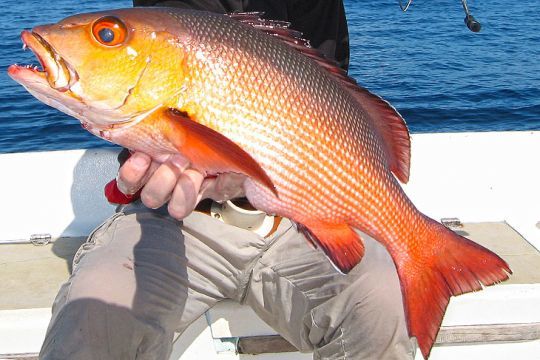
Its dorsal fin is composed of a part with hard rays and, behind, a smoother part with soft rays. The two parts are linked to form a long dorsal fin. Its pectoral fins are long, sickle-shaped and very pointed. The caudal fin has a notch (slightly V-shaped). Juveniles of this species can generally be recognized by the two white spots on their backs, although some juveniles are bicolored, with a white rear.
Fishing spots for red carp
This red snapper is found throughout the tropical and subtropical Indo-Pacific Ocean, from East Africa to the Pacific, from Australia to southern Japan. It can be found along coral reefs, both outside and inside lagoons.
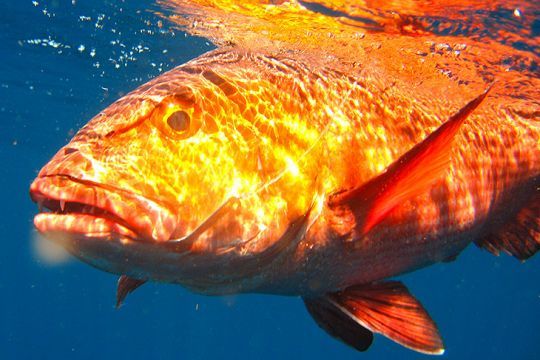
It can be fished at varying depths, from the surface to 70 m below the surface. The largest specimens are often caught at greater depths, especially at the foot of drop-offs. Juveniles squat on the shallow reefs and sea grass beds of lagoons.
Fishing techniques
The red dog snapper feeds mainly on fish. It is very present and extremely opportunistic. In fact, this predator often gets the upper hand during hunts to seize food before its neighbors. Traditionally, it is still widely fished with longlines. But this "red carp" is also sought after by sport fishermen for its pronounced hunting nature.
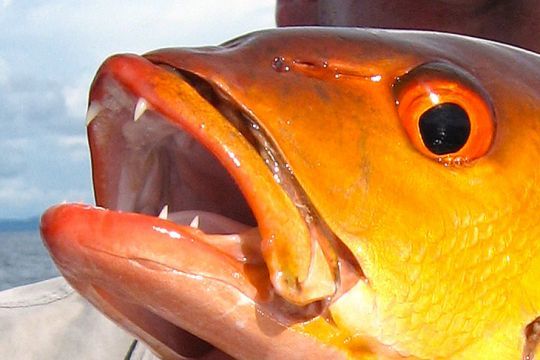
They can be caught on the surface or on the bottom. Poppers can be used to target "red carp" on the periphery of coral reefs flush with the surface. Be careful, the popper must be cast flush with the reef, but not on it, otherwise the fish will grab it and run into the reef, slicing through any diameter fluorocarbon like a razor blade. At the foot of the drop-offs, let a 100 to 250 gram jig spin to target the biggest fish.
Reproduction
Males and females are sex-separated. Females reach sexual maturity late, at the age of 9, when they measure 43 to 47 cm. Males are precocious, reaching adult size at just 2 years of age, when they measure 30 cm. Spawning takes place throughout the year.
Size and weight
- Legal minimum catch size: none
- Size at sexual maturity: 47 cm
- Average height: 51 cm
- Maximum height/weight: 95 cm (55 years old!)
- World record: 16.55 kg - 94 cm (Haha Island, Ogasawara, Japan, 18/05/2020)
Good to know
Red snapper hunt both day and night. They hunt alone or in groups of up to 30 individuals. The world record was caught surfcasting on a frozen mackerel - hats off to them! It is the snapper with the longest life expectancy: between 55 and 60 years! Beware, though, that its flesh can carry toxins, particularly in older individuals that have spent their lives on the reefs.

 /
/ 